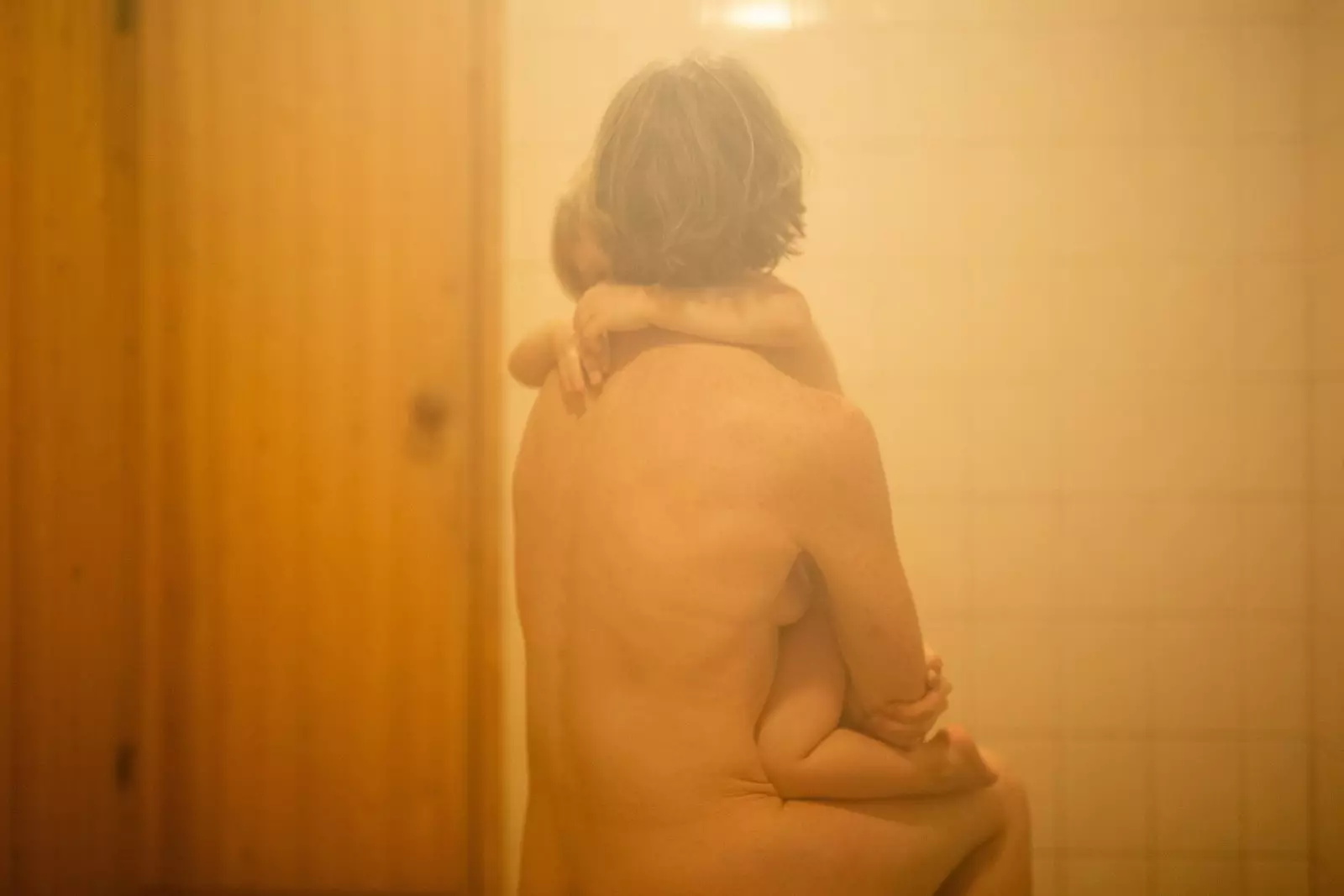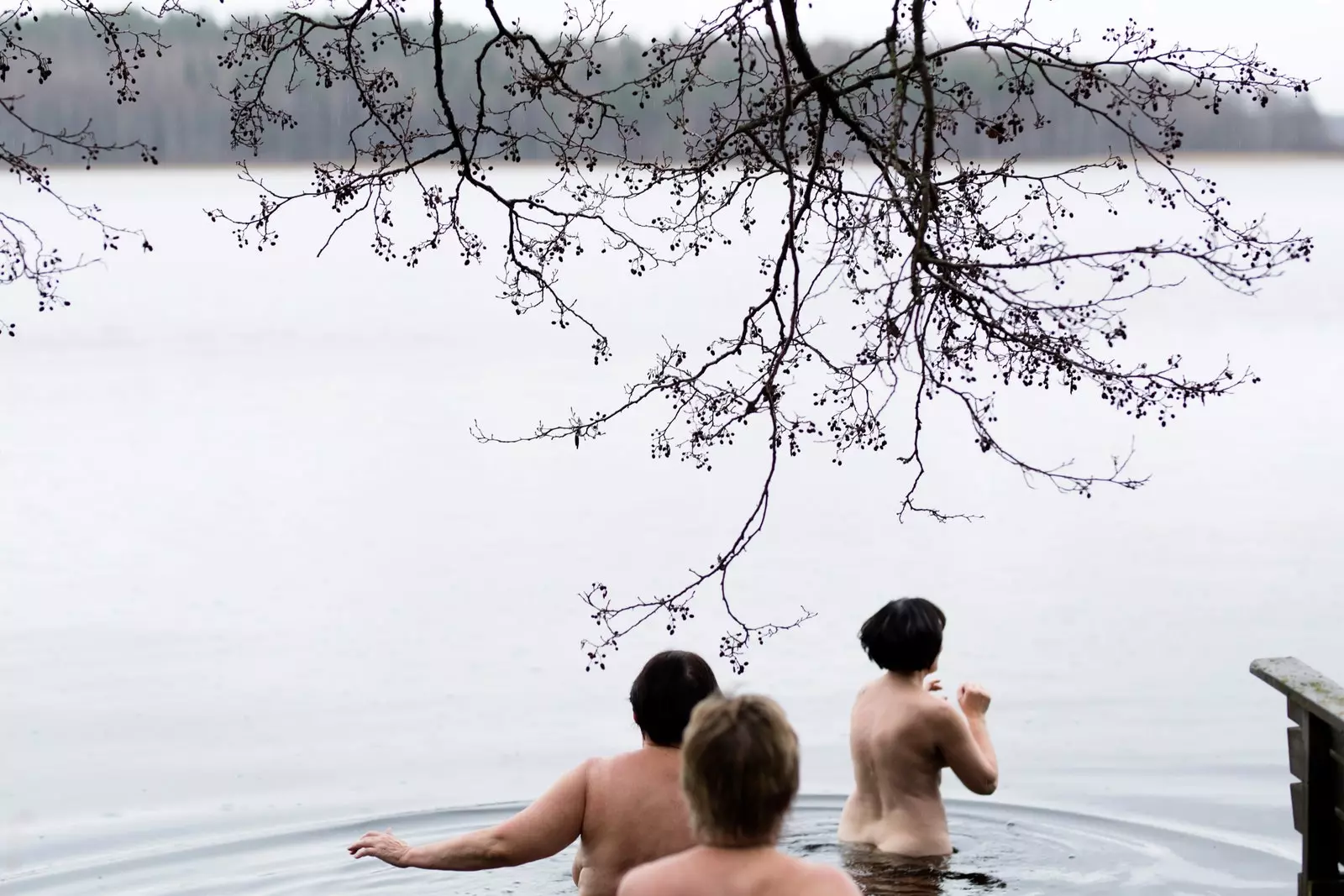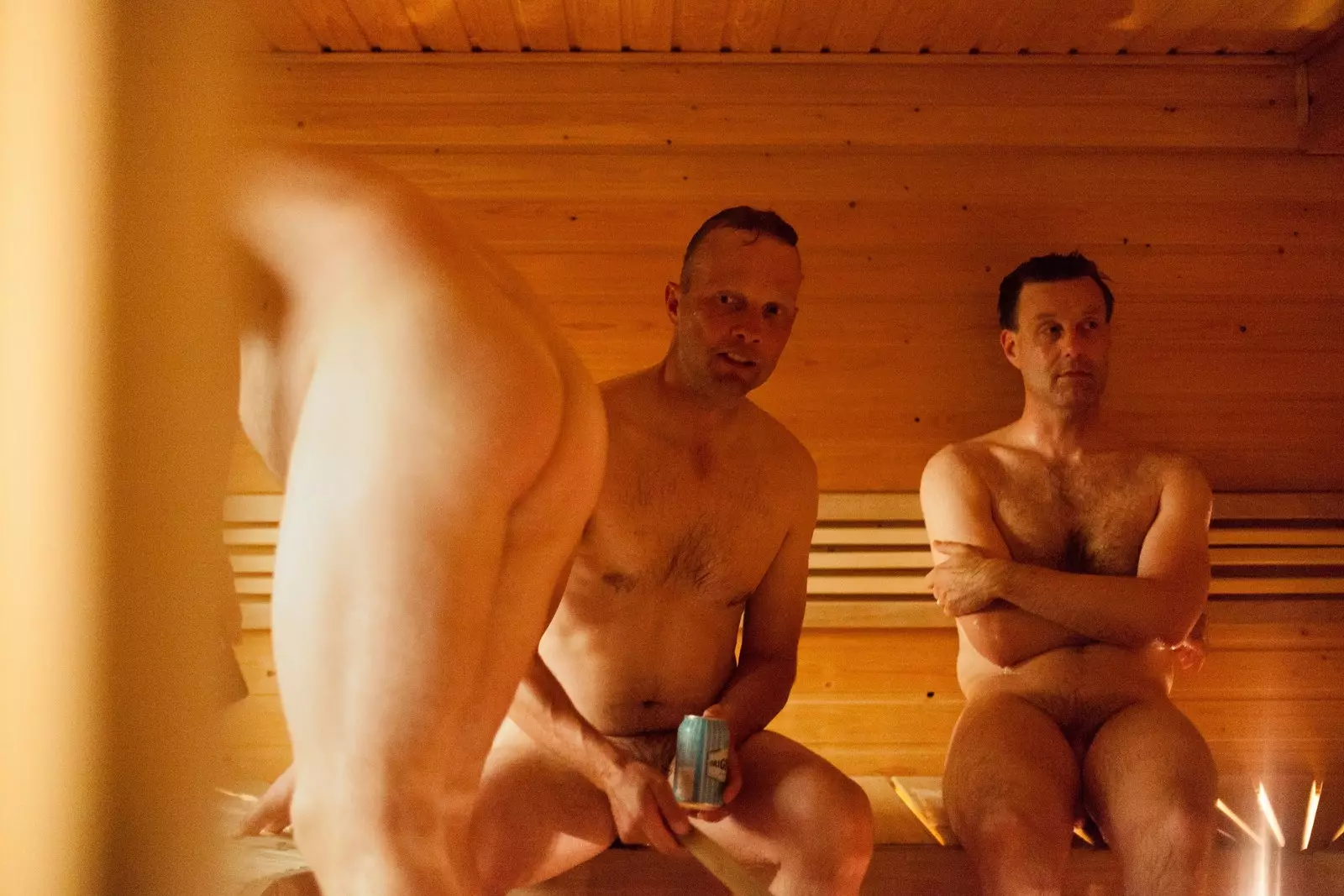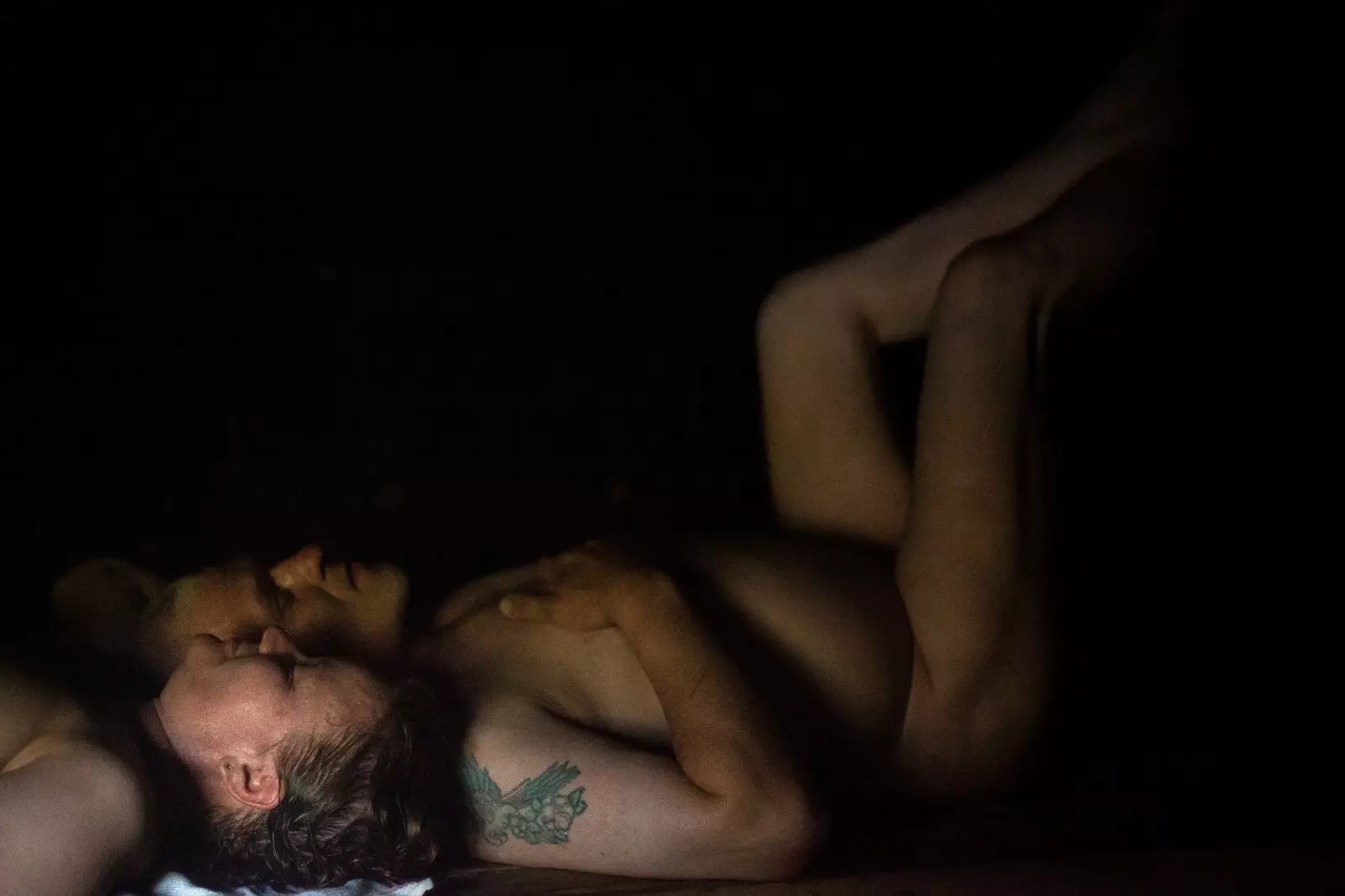
In Finnish saunas there are family gatherings, friends...
'Sauna' is the only word in Spanish that comes from the Finnish . Articulating it awakens a dense, humid heat, sought in a dark, cloudy, small, light-colored wooden chamber, where blurred vision and heavy sweating lead , walking out the door, a light and lucid state.
For two years photographer Heli Blåfield toured Finland to document sauna culture in her country. These trips resulted in the images that, under the title Sauna shift , are displayed in the Iberoamerican Institute of Finland , within the programming of PHotoESPAÑA 2021.
The Finnish sauna follows steps defined by tradition . After a previous shower, you enter the enclosure with a small linen or cotton towel, the pefletti, which is placed on the bench. The temperature usually ranges between 70° and 80°. In the room, nudity is required.
On the stove, kiuas, the stones are placed into which water is poured which, by turning into steam, increases the perceived warmth. Space stays above dew point to avoid condensation, which concentrates on the skin, producing a false perspiration effect.

After the sauna, a very cold bath!
In Finland there is a word that applies only sauna steam: löyly, different from atmospheric steam: höyru . Links to the terms spirit, breath and soul , in a clear reference to the ritual origin of the custom.
Participants lightly hit each other on the back with birch branches , a practice that relaxes the muscles and promotes circulation. After an interval that usually ranges around thirty minutes, goes out to take a cold shower or bath , if you are on the shore of a lake or the sea. In winter a hole is drilled in the ice, or simply rolled on the snow. It is then repeated in the sequence two or three times. When it's over proceed to take a snack accompanied by beer or vodka.
Faced with the sexual connotations that the sauna has in the rest of Europe, in Finland it is considered devoid of any sensual nuance . Men and women practice it separately. Families often get together , and children are taught to maintain the composure they would maintain in church. Inside it is not allowed to eat or drink, talk about work or politics. In the sauna there are no hierarchies.

What for us is a sporadic activity, for the Finns it is quite a ritual.
Finland has 5.3 million inhabitants and 3.3 million saunas . The institution is part of the national identity. We find them in homes, offices, even in Parliament, where deputies sometimes meet.
99% of Finns take a sauna once a week . The tradition sets on Saturday afternoon as the indicated day. When the sauna was a peasant habit, it marked the end of the work of the week and the cleaning before the religious service on Sunday.
The origins of this custom are lost in the history of the Finnish people. The first testimonies appear in the Kalevala , the national epic, gathered from ancestral songs. Also in the writings of Nestor the Chronicler , which in the 12th century mentioned “hot wooden saunas in which naked bathers beat each other with branches and finally pour cold water on each other”.
A legend tells that a farmer, fond of high temperatures in his sauna , he caught the attention of the devil, who invited him to the place where he would enjoy an endless burning: Hell . There, to the surprise of the evil one's henchmen, the Finn asked them to raise the temperature until it became unbearable for the demons themselves. The farmer was driven out and remained safe from the machinations of the devil.

Legends and years of history run through the sauna tradition in Finland.
When, after the Reformation in northern Europe and the Counter-Reformation in the south, bathhouses were closed, Finland stuck to its custom . If on the continent the institution was urban in nature, in the extreme north of Europe it subsisted as a rural habit. Klaus Magnus, who traveled to this country in the 16th century, described his surprise at the naturalness of the local population in the face of nudity that he found both inside the saunas and in the bathroom and later refreshment.
In origin, the chamber intended for the sauna was heated by lighting a fire , whose heat was retained in the stones on which the water or ice was later poured. Once the smoke had cleared and the ventilation hole was closed, the temperature was maintained for hours. This format, which It is still practiced under the name of smoke sauna , is still highly valued in Finland today.
The system was replaced in the 19th century by the metal stove with a chimney. , which made it possible to prolong a constant temperature. The stones retained the function of generating steam.
The ritual aspect becomes evident in the ceremonial character that the Finns grant to cleaning before marriage, or in the pre-hospital custom of giving birth in the smoke sauna, which has been justified by its degree of sterilization due to heat. After a death, the corpse was washed in the sauna area, a fact that reflects its cultural relevance as a place of transformation and framework of the rites of passage. Today, adolescence establishes the point at which the family sauna group is abandoned and shared with other young people of the same age.
a place where social and family relationships are woven that opens a parenthesis in the everyday that promotes conversation and reflection . The project in which the exhibition Sauna shift is framed has been sponsored by the Patricia Seppälä Foundation and the Finnish Sauna Association.
